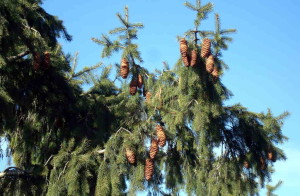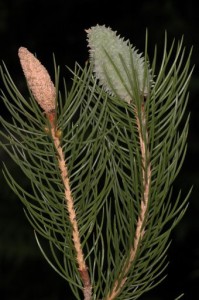
Picea smithiana (Rai)
Picea smithiana (Rai), commonly known as the West Himalayan Spruce, is a towering conifer native to the higher elevations of the Western Himalayas, including regions within the Great Himalayan National Park (GHNP). This elegant tree is an ecological cornerstone of temperate coniferous forests and is prized for both its ecological and economic value.
Typically found at altitudes ranging from 2,400 to 3,600 meters, Picea smithiana (Rai) thrives in moist, well-drained soils and cooler climatic zones. It is easily identified by its drooping, dark green needles and scaly, purplish-gray bark. Mature trees can reach impressive heights of up to 60 meters, making them among the tallest conifers in their native range.
In GHNP, Picea smithiana (Rai) is often found growing in association with other conifers such as Abies pindrow (Silver Fir), Cedrus deodara (Deodar), and Taxus wallichiana (Himalayan Yew). These spruce forests serve as vital habitats for a wide range of fauna, including endangered species like the Western Tragopan and the Himalayan Monal. The tree’s dense canopy and layered understory provide food and shelter for birds, small mammals, and insects.
Economically, the Rai tree is valued for its fine-grained wood, which is used in construction, furniture-making, and paper pulp production. However, overharvesting and deforestation have put pressure on native populations, underscoring the importance of protected areas like GHNP for long-term conservation.
| Local name | Rai |
| Botanical name | Picea smithiana |
| Family | Pinaceae |
| Description | It is a large tree found between 2100-3600m. Branches whorled, horizontal, slightly curved. Leaves 3-4.5 cm long, spirally arranged all round the branches, needle like, and stiff, pungent . Flowers monoceious. |
| Flowers & Fruits | April-May |
| Distribution | Frequently, found in association with Pinus wallichiana in all the valleys of GHNP. |
Conservation Insight
Preserving native conifers such as Picea smithiana (Rai) is essential for sustaining the rich biodiversity of the Great Himalayan National Park. Their presence maintains forest structure, regulates microclimates, and supports countless species.




